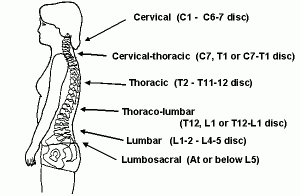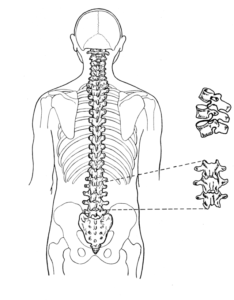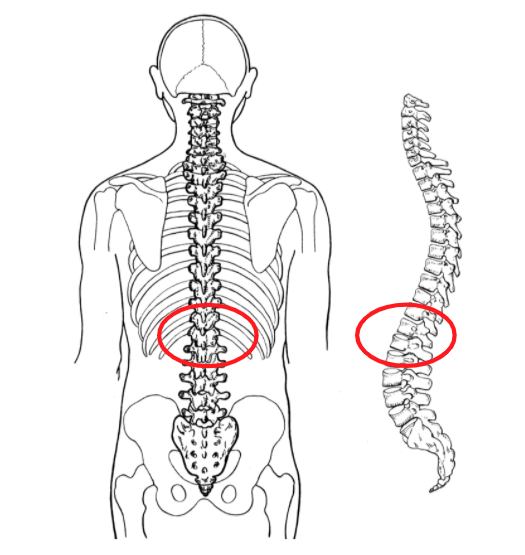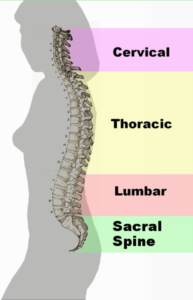Where The Thoracic And Lumbar Spine Meet
The thoracic spine and lumbar spine connect at one of the more important locations in the body.
The ribcage corresponds to the thoracic spine protecting the heart and lungs.
The lumbar spine curves in and are five bones between the ribcage and the pelvis. These five bones are the largest of the spine and they bear and transfer the weight of the upper body to the lower body.
A curved lumbar spine is one of a number of uniquely human traits. We are the only creatures whose spine curves in this way. Most lower spines are flat.
The place where the bottom thoracic vertebra (T12) meets the top lumbar vertebrae (L1) is called the thoracolumbar junction.
This junction is also an attachment point for many of the body’s key muscles.
My favorite muscle, the psoas, attaches to both T12 and L1.
The large back muscles the latissimus dorsi and trapezius have attachments on T12.
The diaphragm, our breathing muscle lives in the neighborhood, while not attaching at either of these spots.
The cauda equina, a bundle of nerves at the end of the spinal cord, also known as the horse’s tail, is found anywhere from T12 to L3 in adults.
The thoracolumbar junction, or middle back, is a particularly troubling spot in the skeletal system.
I think most people are leaning slightly backward when they are standing. This is mostly due to poor skeletal alignment in the pelvis and legs but the effects on the middle back are profound.
Leaning Backward Messes with the Spine
This juncture of the thoracic and lumbar spine is interesting for a number of reasons.
The two sections of the spine are very different from each other which can make for a tricky transition.
The spine can be split into two, with the front half bearing the weight I mentioned. The back half of the spinal column provides for movement through the facet joints.
These interlocking facet joints allow for the movements of the spine but are aligned differently at the meeting place of T12/L1 which adds to the instability of the joint.
There is almost no twisting available in the lumbar spine. As I said they are big bones meant to bear weight. Twisting would make them less stable.
The thoracic spine, on the other hand, is capable of a great deal of rotation.
The ribcage puts the brakes on too much rotation but the ability for the thoracic spine to twist is in marked contrast to the lumbar spine.
This makes for an inherent instability in the shift from the stable lumbar to the movable thoracic.
And poor alignment in the pelvis and legs often allows the weight of the upper body to fall backward at the exact spot where T12/L1 meet.
I often refer to this as a collapse at T12. When I say people lean backward, they are doing so right at T12/ L1.
Many people I see breathe less fully than desired. This is also because of the collapse at T12/L1 which doesn’t allow for the best use of the diaphragm.
If the diaphragm can’t descend freely we are forced to breathe more with the chest.
There are so many reasons why we need good posture. Providing support at the thoracolumbar junction ranks very high on the list.
***



 .
. 